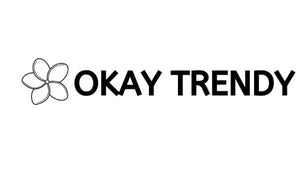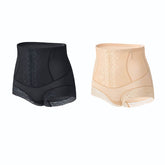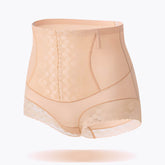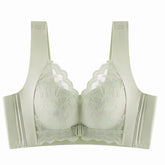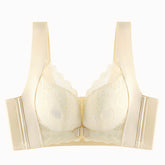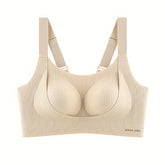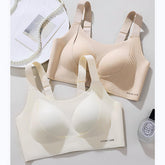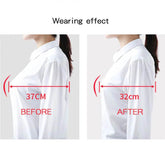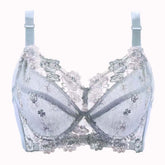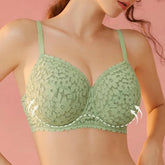9 Myths About Breast Cancer

There are still many untruths and misconceptions circulating about breast cancer. We clear up and turn assumptions into facts because breast cancer is still the most common cancer in women.
Jutta John is head of the Breast Center at Helios Klinikum Hildesheim and has subjected nine breast cancer myths to a truth check. She explains to us what is true and what is really true.
1. Smartphones cause breast cancer.
According to today's knowledge: A few years ago, there was still great uncertainty among the population as to whether electrosmog caused leukemia and cell phones caused brain tumors. The International Agency for Research on Cancer (IARC) classified electromagnetic fields as "possibly carcinogenic" within certain frequency ranges. Today, however, many scientists no longer assume a measurable cancer risk. In order to eliminate possible risks for humans and the environment as far as possible, there are extensive protective regulations.
In addition, it is now considered safe to assume that neither high-frequency nor low-frequency fields are strong enough to directly alter atoms and molecules. Whether there are possible indirect effects is still under discussion. Thus, it is neither certain nor completely disproven whether cell phone radiation can cause cancer.
2. Underwired bras increase the risk of breast cancer.
Many rumors circulate about this myth, but it is false. Among them, that underwire bras pinch off lymphatic channels, hindering the removal of harmful cellular waste, thus increasing the risk of cancer.
However, a study that appeared in the U.S. cancer journal Cancer Epidemiology, Biomarkers & Prevention showed that there is no link between wearing underwire bras and breast cancer. This was confirmed by a study at the Fred Hutchinson Cancer Research Center in Seattle, which surveyed 1,500 women with and without breast cancer about their wearing habits.
3. Breast cancer risk is increased in smokers.
Yes. Smoking generally increases the risk of cancer, whether in cigarettes, hookahs, or tobacco heaters. Studies prove this time and again. Not only lung cancer, but also a whole range of other cancers can be triggered by tobacco consumption.
Tobacco is the main risk factor for some tumor types, while smoking at least increases the risk for others. Background information was summarized as early as 2009 by a panel of experts from the International Agency for Research on Cancer (IARC). The research team reported that there are many indications of a connection between active smoking and the development of breast cancer. In addition, there is an increasing risk of cardiovascular disease and many other diseases. Smoking is the most important preventable risk factor in the development of cancer.
4. Women who are overweight or obese are more likely to develop breast cancer.
connection is suspected. In Germany, approximately seven percent of all cancer cases occur as a result of obesity. Fatty tissue produces large amounts of estrogen. The excess of estrogen is associated with the development of breast and cervical cancer. In addition to estrogen, adipokines, which promote or inhibit cell growth, are produced. The hormone leptin, which promotes cell growth, is particularly abundant in obese people.
5. Milk and dairy products increase the risk of breast cancer.
Not confirmed so far. There are vague indications that cow's milk contains pathogens that promote the development of cancer cells. However, there are still no reliable research results.
An initial suspicion of a connection is offered by countries with a high consumption of milk and beef, where there are high rates of colorectal cancer. In addition, there are new findings by Nobel Prize winner Harald zur Hausen and the German Cancer Research Center (DKFZ). They found previously unknown pathogens in cow's milk and beef that could pose a risk to humans. The so-called Bovine Meat and Milk Factors are suspected of causing chronic inflammation, which in turn leads to a higher risk of colon cancer and possibly also breast and prostate cancer.
According to current knowledge, it is not yet possible to estimate how significant the pathogen is for the development of tumors. For the time being, the Federal Office for Risk Assessment therefore continues to recommend the unrestricted consumption of cow's milk.
6. If the mother had breast cancer, the daughter also gets sick.
No, but it is a risk factor. Familial breast cancer is considered a risk factor for developing breast cancer. But: If a family member develops breast cancer, it does not automatically mean that other women in that family will get the disease or that a genetic risk of breast cancer is always inherited. By the way, men can also develop breast cancer.
Only five to ten percent of all breast cancers can be explained by an inherited genetic mutation. In about a quarter of all women with breast cancer, there is an increased incidence of breast cancer in the family. Breast cancer genes that have been known for some time include BRCA 1 and BRCA 2.
7. Breast cancer is always fatal.
No. A breast cancer diagnosis is not the same as a death sentence. Most women diagnosed with breast cancer in recent years survive the disease permanently, or at least for a long period of time.
The survival rate for breast cancer depends in particular on the stage at which the cancer is discovered and how aggressive the cancer cells are. Around 90 percent of women with the disease can be cured if the tumor is localized.
8. The larger the breast, the greater the risk of breast cancer.
No risk per se, though large breasts are more difficult to examine. But there is no evident-based evidence that there is a link between breast size and breast cancer. The density of the tissue is more decisive than the actual size of the breast.
This is supported by a 2016 study in the U.S. by Dr. P. T. Williams of the Lawrence Berkeley National Laboratory, Life Science Devision. The study involved 80,000 women who had varying levels of physical activity. In a follow-up eleven years later, it was found that 111 women died as a result of breast cancer. Again, breast density proved to be the key risk, not cup size alone.
9. Breastfeeding reduces the risk of breast cancer.
Yes. Women who breastfeed for more than six months may lower their risk of breast cancer. However, this is true only for non-smoking women, as epidemiological data confirm.
Breast cancer incidence can be more than halved if mothers breastfeed their babies for at least six months. In addition, a study published in the journal Archives of Internal Medicine showed that women with a family history of breast cancer had a 59 percent lower risk of developing the disease if they breastfed for at least six months.
